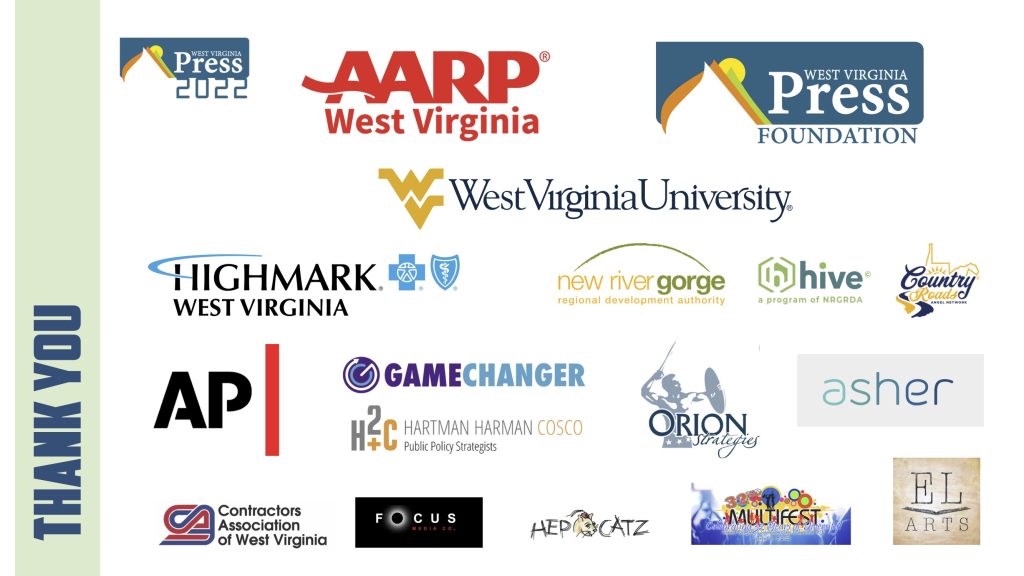By Autumn Shelton, WV Press Association
CHARLESTON, W.Va. – As newspaper companies move toward website creation to supplement their traditional print publications, many are also focusing on digital advertisement to increase revenue. However, this can be a cumbersome process as the industry changes and for those just starting out.
To help make this move easier, or to just get people thinking about making the transition, experts from the digital advertising world led an educational session for media personnel during the West Virginia Press Convention held Aug. 4-6.
Pat Strader, founder of Digital Relativity, and Asher Agency’s Steve Morrison, vice president and general manager, and David Goode, digital director, shared their insights and best practices on digital advertising.
Goode began the session by discussing the need to focus on the client and how to target their audience, instead of selling bulk ads.
“I think you start with not so much an insert in trying to sell a package and not even so much necessarily what the client wants because they don’t always necessarily know what they need,” Goode said. “I think you need to start with the solution, and that often starts with the audience.”
“It’s important to sit down with a client and figure out what they want to accomplish,” Goode noted.
Through this informational meeting, a media plan can be developed. Once a media plan is in place, then ads can be created to target the correct audience for the client.
One basic example cited: If the owners of a coffee shop want to advertise, then digital ads should be targeted to readers who drink coffee. Once that audience has been targeted, then a broader targeting strategy could be used – like advertising to those in the 18-49 age range.
“Sometimes you see better results with broader targeting,” Goode stated.
In order to be able to target the correct audience, though, Goode said the digital platform used should be able to break down website traffic data.
Some digital platforms, like Facebook and Google, will have restrictions in financial categories to avoid instances of possible discrimination.
“You have to know those platforms inside and out to be able to say, ‘Okay, this is a great way to reach people,’ but you have to navigate those restrictions,” Goode continued. “It’s really about the best way you can get in front of the right people, with the right frequency and then track that return on investment.”
Next, Strader spoke about the importance of having a data management plan to be able to provide clients with targeted ads.
Even the smallest newspaper outlets will have first-party data to begin creating a plan, Strader said. This first-party data will often just be a subscriber list or a customer email list.
Once companies have a basic list in place, they can then brainstorm ways to build out that data set.
“Think about how you leverage that data, put it into a data management platform that makes it accessible to me as a marketer and advertiser,” Strader said, adding that Google Analytics may be one of the best ways for a company to begin using a data management system. However, any measurable information that can be gathered about subscribers is beneficial, especially if a company decides to use an agency.
“On your websites, there is low hanging fruit there. There’s lots of different ways you could implement strategies to help capture information,” Strader said.
He concluded that once a data set has been created, companies should be “good stewards” of all collected subscriber data.
In response to questions from the audience about creating data sets, especially if newspaper purchases are made at the stand instead of through subscriptions, Don Smith, executive director of the West Virginia Press Association, reinforced the idea that many publications already have data sets that could be used to assist their clients with online ad targeting.
He recalled a story of a client during a political campaign who discussed targeted advertising in print media by stating, ‘You know the name of 80,000 of them (subscribers). You know where they live. You know their address, but at that point you have never given me a way to reach them. You make me buy in bulk. You don’t give me any data.’
“We can’t make the same mistake online,” Smith said, noting that the Press Association is assisting newspapers with website creation.
“We get stuck on the dollar. We need to think about what the information is worth,” he continued.
If 80% of a newspaper’s readership is in print, with the remaining 20% being online readership, then it may be beneficial to, for example, give customers a free limited time online subscription, Smith explained. This would allow newspapers to capture subscriber data thereby starting the transition to online targeted advertising.
“We are going to have to go online to keep our audience,” Smith said. “We know we have to move that way and we have to figure out how to capture that data. It has to be more of a priority for us.”




